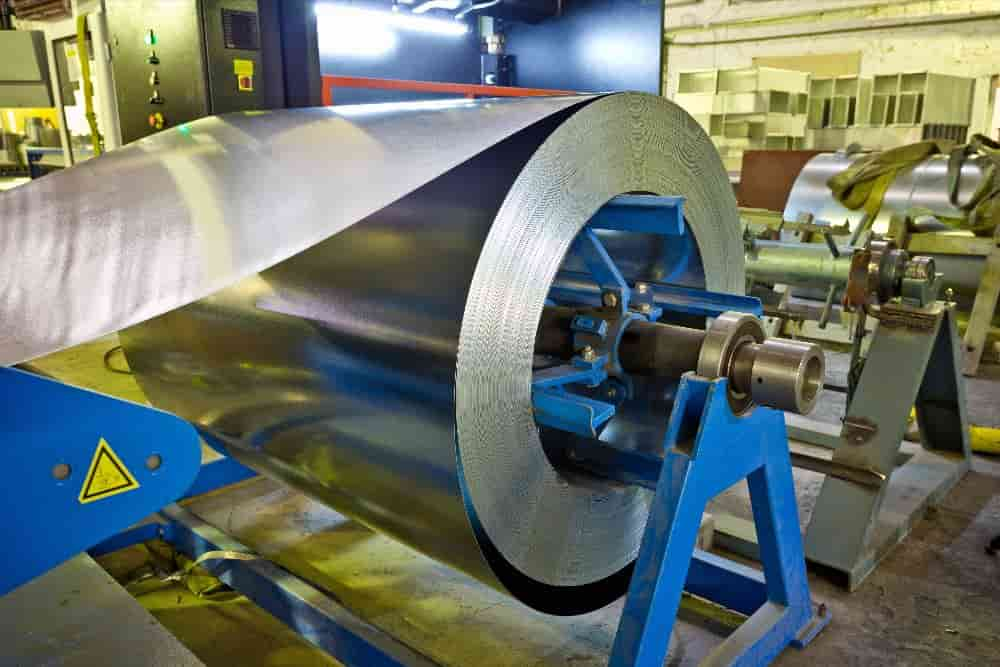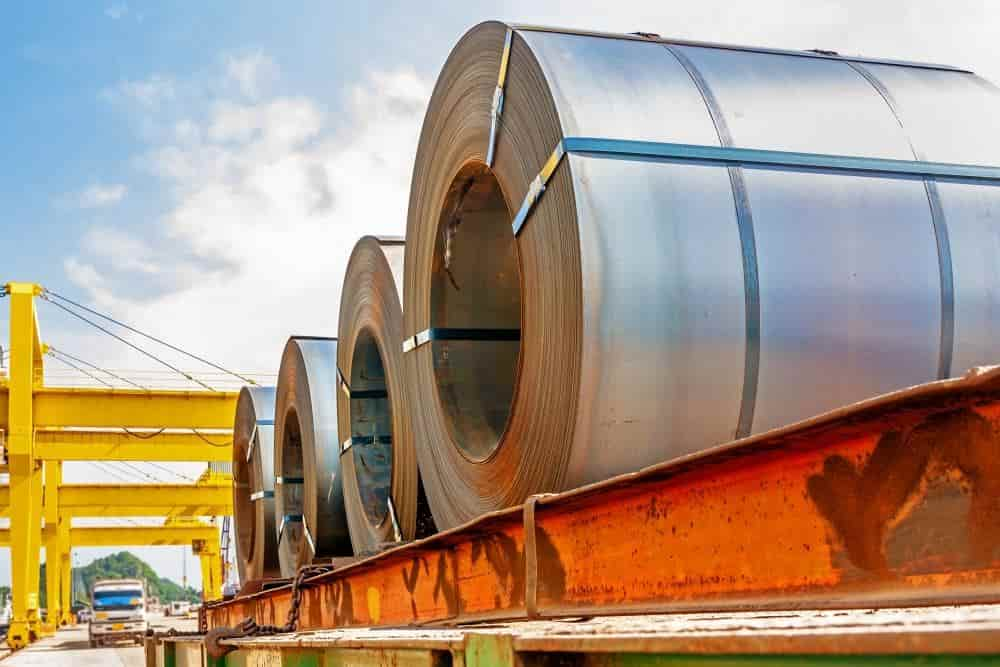In this article, we will discuss clean stainless steel: protect from rusting using methods Stainless steel is highly resistant to corrosion – however, stainless steel applications may still be subject to surface damage.
In harsh environments without routine cleaning and maintenance, long-term oxidation, corrosion, rust, or tarnishing may occur. Repeated mechanical damage can also lead to faster metal degradation.
All stainless steels contain at least 10.5% chromium by weight. It is the chromium content that forms a protective layer called a passivation layer that protects stainless steel from corrosion, unlike other steels. The ability to resist corrosion improves with increasing chromium concentration. Rusting of stainless steel occurs when the passive layer is damaged and there is not enough chromium to repair it.
Cleaning stainless steel bollards Stainless steel applications require regular cleaning and maintenance to prevent oxidation, corrosion, rust, and tarnishing.

How does the passive layer work?
The passive layer is formed when the chromium content of the stainless-steel surface reacts with oxygen. The passive layer acts as a protective barrier and prevents further oxidation of the stainless steel. In contrast, ordinary carbon steel surfaces form iron oxides when exposed to oxygen. The iron oxide does not form a continuous layer, so it eventually flakes off, exposing the raw steel and making it susceptible to destructive rust cycles.
The stainless-steel passivation layer is self-healing. If damaged, the chromium in exposed stainless steel can react with oxygen to form new chromium oxide. If sufficient chromium is present, the chromium oxide layer will continue to deform and protect the stainless-steel surface.
Causes of stainless-steel corrosion
Chromium can protect stainless steel if the local concentration is 12% or more. Any reduction in local chromium concentration below the 12% threshold will result in tarnishing or rusting. Common causes of stainless-steel corrosion are chlorides, hydrochloric acid, sulfuric acid, contact with iron or carbon steel, and high temperatures. There are over 150 grades of stainless steel, and some corrode more easily than others.
Corrosion resistance and other useful properties of stainless steel are increased by increasing the chromium content or by adding other elements such as molybdenum, nickel, and nitrogen.

Chloride
Chromium oxide is particularly sensitive to chlorides. Corrosion is accelerated in coastal areas exposed to salt spray and in areas where deicing salts are used in the winter. Components in the chemical and food industries have a high chromium content to compensate for frequent exposure to chlorine, salt, and other corrosive substances.
Acids
Strong acids destabilize the passive layer. General surface corrosion occurs when stainless steel is exposed to hydrochloric and sulfuric acids. Hydrochloric acid is very acidic and is used in the production of plastics. Dilute hydrochloric acid is present in descaling agents used to remove limescale.
The caustic chemical sulfuric acid can result in both secondary thermal burns and serious chemical burns. It is used in mineral processing, oil refining, and wastewater treatment. Thinner formulations are found in household products such as drain cleaners.
Iron and carbon steel pellets
Contact with iron or carbon steel particles can also cause corrosion of stainless steel. Trace particles of iron or carbon steel can rust stainless steel surfaces. If left unattended, rust spots can damage the chrome oxide surface and develop into localized corrosion such as pitting. Contamination occurs when stainless steel is exposed to sparks or particles from welding, cutting, drilling, or grinding of adjacent carbon steel.

Iron and carbon steel particles on drills
Contamination occurs when stainless steel is exposed to sparks or particles from welding, cutting, drilling, or grinding of adjacent carbon steel.
High-temperature
A less common type of rusting occurs when stainless steel is exposed to very high temperatures in the 750-1550°F range. This type of corrosion is found in welding applications where the stainless steel is heated and then cooled. Sensitization may occur when carbon and chromium combine to form carbides.
This causes the grain boundaries to suffer from chromium deficiency and the chromium oxide layer to become discontinuous. Heat sensitivity carries the risk of destroying stainless steel forever. However, sometimes the damage can be reduced by heat treatment.
Stainless steel being welded Sensitivity in welding applications causes the grain boundaries to lose chromium content and the chromium oxide layer to become discontinuous.

Handling stainless steel
The useful life of stainless steel can be extended by avoiding exposure to corrosive substances. When working with stainless steel, observe recommended procedures:
Always wear clean gloves.
Always use stainless steel tools and parts.
Avoid contact with concrete cleaners.
The use of steel wool or other abrasive pads is not advised.
The most typical error is using harsh cleaners to clean stainless steel surfaces. On stainless steel, never use the following products:
Chloride cleaner
All-purpose cleaner
Chlorine bleach
Normal cleaning of stainless steel
Stainless steel must be cleaned regularly to maintain the integrity of the metal and maintain its pristine appearance. With proper care and choosing the right grade, stainless steel can be protected from corrosion. If stainless steel maintenance is neglected, corrosive substances can accumulate on vulnerable surfaces.
Daily cleaning steps (to be done every 6 months)
To remove built-up grime, use a soft nylon brush.
Wash with mild soap or detergent.
Then wash with clean water.
Dry with a soft cloth, disposable cloth, or hair dryer.
Care and maintenance of stainless steel may require the use of hazardous chemicals. Follow all safety instructions provided with the cleaner or polish.

Extend the life of stainless steel
Proper routine care and specialized cleaning for more serious problems can extend the life of stainless steel and ensure the proper functioning of the application. Although the internal chromium content of stainless-steel acts as corrosion protection, it is not enough to rely on this alone. Exposure to chemical solutions, weathering, salt, or mechanical damage all results in the need for routine inactivation.
Special stainless-steel cleaning
When stainless steel becomes very dirty and shows signs of discoloration or surface corrosion, regular cleaning may no longer be sufficient. Below are cleaning methods designed to address specific types of damage.
Unsightly fingerprints left on stainless steel applications can be washed off with soap and warm water.
Fingerprint
Use warm water and soap or detergent to clean.
You can also use commercially available solutions or hydrocarbon Solvents.
Oil stains and grease marks on stainless steel can be removed with a solvent and a non-abrasive cloth.
Traces of fat
Use isopropyl alcohol, acetone, or methyl alcohol.
Apply the solvent several times with a clean, non-abrasive cloth to remove all traces.
Remove char stains from stainless steel pots and pans with diluted ammonia or detergent.
Burnt spots
Soak in hot water with detergent or diluted ammonia.
Remove the dirt with a nylon brush.
If necessary, use fine abrasive powder, but be careful not to scratch the polished surface.
Rinse thoroughly with clean water.
Passivation Procedure, Cleaning, and Passivating Treatment
Clean stainless-steel surfaces can be re-damaged by mechanical means, extreme heat, or chemical damage. When this happens, the iron is exposed and the material rusts again.

Periodic deactivation may be required to prevent rusting. Passivation maximizes the inherent corrosion resistance of stainless-steel alloys.
Ideally, the passive layer is formed immediately after machining or passivation to completely cover the stainless-steel surface. Particles and contaminants are likely to stick to surfaces. If allowed to remain, these foreign objects can reduce the effectiveness of the original protective film.
Passivation is required to maximize the natural corrosion resistance of stainless steel and to remove surface contamination.
A two-step passivation method provides optimal corrosion resistance:
1) Clean
Stainless steel parts must be thoroughly cleaned. Stainless steel cannot be passivated unless the surface is clean and free of contamination and deposits. In severe cases, foreign material may need to be removed by mechanical grinding or abrasion or pickling before inactivation can be performed.
2) Inactivation therapy
Stainless steel parts are immersed in a passive acid bath. Any of three inactivation methods can be used: nitric acid inactivation, nitric acid inactivation with sodium dichromate inactivation, or citric acid inactivation. The passivation operation depends on the chromium content and machining characteristics of the stainless-steel grade, as well as the specified acceptance criteria.

Conclusion
All information mentioned above providing to the buyers who want to know and buy metal steel products with professional and innovative thoughts, and passionate and enthusiastic attitudes. Our vision is to be a standard for customized products and quality services so that we can build a good brand image for our company in the national and international markets with competitive prices and cheap shipping services.
We are eager to do what we do and strive to further the needs of our customers by providing quality products and services. And do not hesitate to any questions our support teams are available. For more information kindly visit our site.











Your comment submitted.